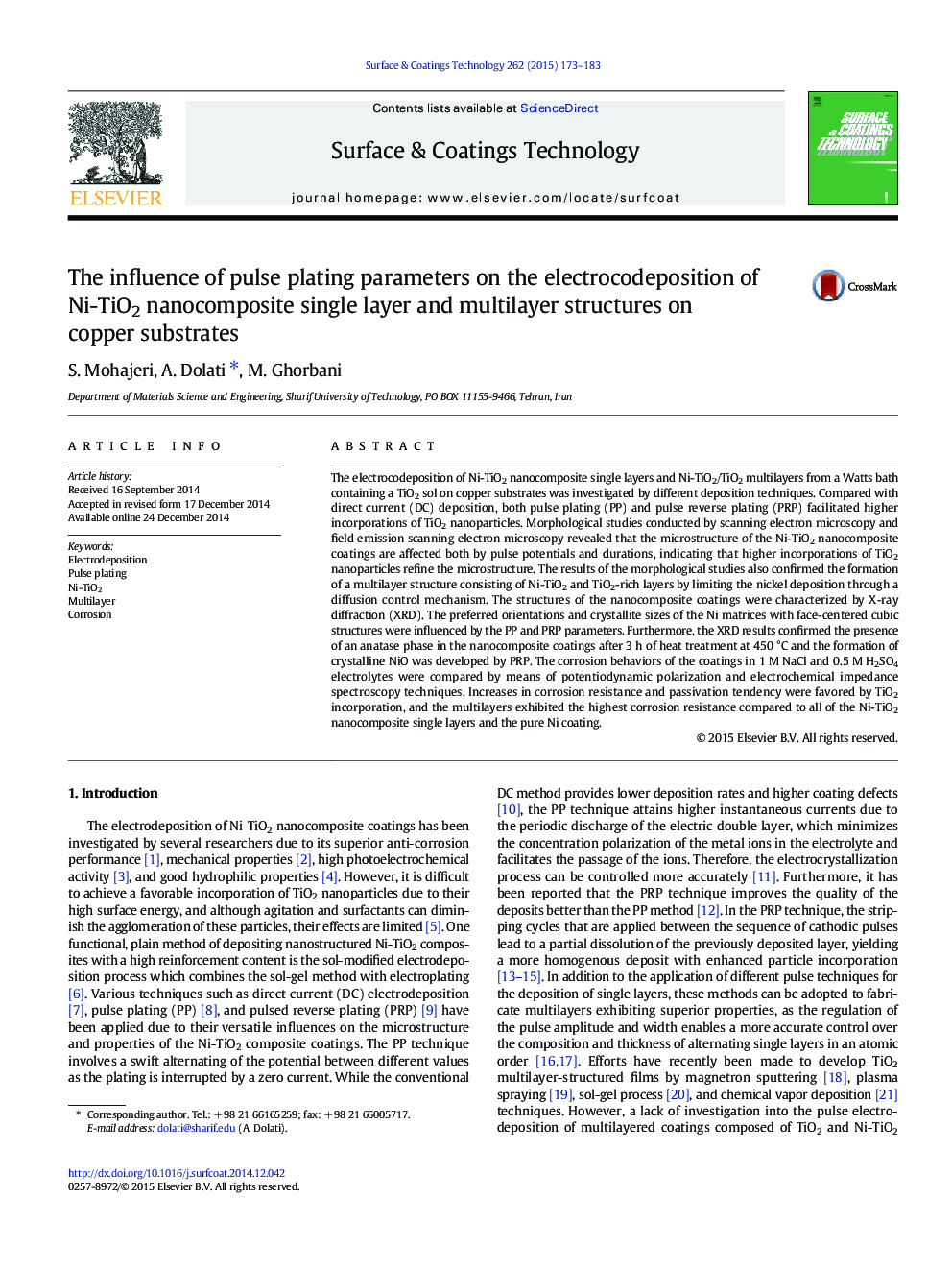| Article ID | Journal | Published Year | Pages | File Type |
|---|---|---|---|---|
| 1657209 | Surface and Coatings Technology | 2015 | 11 Pages |
Abstract
The electrocodeposition of Ni-TiO2 nanocomposite single layers and Ni-TiO2/TiO2 multilayers from a Watts bath containing a TiO2 sol on copper substrates was investigated by different deposition techniques. Compared with direct current (DC) deposition, both pulse plating (PP) and pulse reverse plating (PRP) facilitated higher incorporations of TiO2 nanoparticles. Morphological studies conducted by scanning electron microscopy and field emission scanning electron microscopy revealed that the microstructure of the Ni-TiO2 nanocomposite coatings are affected both by pulse potentials and durations, indicating that higher incorporations of TiO2 nanoparticles refine the microstructure. The results of the morphological studies also confirmed the formation of a multilayer structure consisting of Ni-TiO2 and TiO2-rich layers by limiting the nickel deposition through a diffusion control mechanism. The structures of the nanocomposite coatings were characterized by X-ray diffraction (XRD). The preferred orientations and crystallite sizes of the Ni matrices with face-centered cubic structures were influenced by the PP and PRP parameters. Furthermore, the XRD results confirmed the presence of an anatase phase in the nanocomposite coatings after 3 h of heat treatment at 450 °C and the formation of crystalline NiO was developed by PRP. The corrosion behaviors of the coatings in 1 M NaCl and 0.5 M H2SO4 electrolytes were compared by means of potentiodynamic polarization and electrochemical impedance spectroscopy techniques. Increases in corrosion resistance and passivation tendency were favored by TiO2 incorporation, and the multilayers exhibited the highest corrosion resistance compared to all of the Ni-TiO2 nanocomposite single layers and the pure Ni coating.
Related Topics
Physical Sciences and Engineering
Materials Science
Nanotechnology
Authors
S. Mohajeri, A. Dolati, M. Ghorbani,
